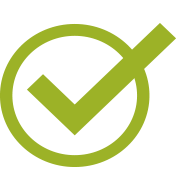Catalog Description
Advisory: Completion of BUS 201 and BUS 202 with grades of "C" or better
Hours: 54 lecture
Description: Analyzing and managing: food, beverage, labor and other costs within a hospitality operation. Emphasis on problem solving, applying cost control techniques to maximize profits while managing expenses. Topics include: establishing standards, cost-volume-profit-analysis, forecasting, purchasing and storage controls, menu costing and pricing, theft prevention and labor control. (CSU)
Course Student Learning Outcomes
- CSLO #1: Assemble a basic food service operation budget.
- CSLO #2: Formulate informed business strategy based on budgets and cost control systems leading to improved profitability and operational efficiency.
- CSLO #3: Evaluate effective purchasing, ordering, receiving, storing, issuing, production, and sales practices in relation to the hospitality industry.
Effective Term
Fall 2025
Course Type
Credit - Degree-applicable
Contact Hours
54
Outside of Class Hours
108
Total Student Learning Hours
162
Course Objectives
- Explain the fundamental concepts of cost management in hospitality.
- Develop skills in problem-solving related to financial challenges in the hospitality industry.
- Apply cost control techniques to enhance profitability.
- Establish and maintain standards for cost management.
- Analyze the relationship between costs and revenue through cost-volume-profit analysis.
- Implement effective forecasting methods and storage controls.
- Master menu costing, pricing strategies, and theft prevention techniques.
- Manage labor costs and optimize workforce efficiency.
- Emphasis on controls and control systems applicable to purchasing, ordering, receiving, storing, issuing, production, and sales of food and beverage, as well as staffing in these areas.
General Education Information
- Approved College Associate Degree GE Applicability
- AA/AS - Health Ed/Physical Ed
- CSU GE Applicability (Recommended-requires CSU approval)
- Cal-GETC Applicability (Recommended - Requires External Approval)
- IGETC Applicability (Recommended-requires CSU/UC approval)
Articulation Information
- CSU Transferable
- UC Transferable
Methods of Evaluation
- Classroom Discussions
- Example: The instructor will lead a discussion on the purchasing and inventory cost associated with forecasting. Students will be asked questions based on the forecasting information and discuss how different data or events may effect the forecasting for purchasing.
- Problem Solving Examinations
- Example: Students will be given a hypothetical staffing question: based on a event at a hotel coming up and how they can effectively with cost restraints provide exemplary service for a meal a dinner meal and banquet. How many staff members will they need? The students will be given hourly wages and a list of necessary and auxiliary positions needed for the event.
- Reports
- Example: Student's will be given a restaurants monthly financials and they will need to analyze the cost of staffing, menu costs, overhead and develop a conclusion on how they might reduce costs while and the potential cost in quality associated with the cuts. Students will complete with a 3 page written report. The prompt and financials will be provided.
Repeatable
No
Methods of Instruction
- Lecture/Discussion
- Distance Learning
Lecture:
- The professor will provide a lecture on cost control models. Students will use provided examples to respond to questions on best practices and to identify how quality control has to be taken into account while using cost control models. Example: How is quality control kept into account while obtaining profitability?
Distance Learning
- Instructor will provide a video lecture on the cost of storage. The students will respond to the lecture in a discussion on the true cost of storage detailing: space, opportunity cost, availability, refrigeration, and lifecycle of the product.
Typical Out of Class Assignments
Reading Assignments
Student will be asked to read Chapter 2 on Portion Control from "Food, Labor, and Beverage cost control" and use the information for the problem solving exam and further enhance lecture.
Writing, Problem Solving or Performance
Student will be given 6 different portions to create a cost effective menu as a special of the day. They must take into account the cost of each item and the overall menu item cost.
Other (Term projects, research papers, portfolios, etc.)
Required Materials
- Food, Labor, and Beverage Cost Control: A concise guide
- Author: Edward Sanders
- Publisher: Waveland Press
- Publication Date: 2020
- Text Edition: 2nd
- Classic Textbook?: No
- OER Link:
- OER:
- Food & Beverage Cost Control
- Author: Lea Dopson
- Publisher: John Wiley & Sons
- Publication Date: 2015
- Text Edition: 6th
- Classic Textbook?:
- OER Link:
- OER:


